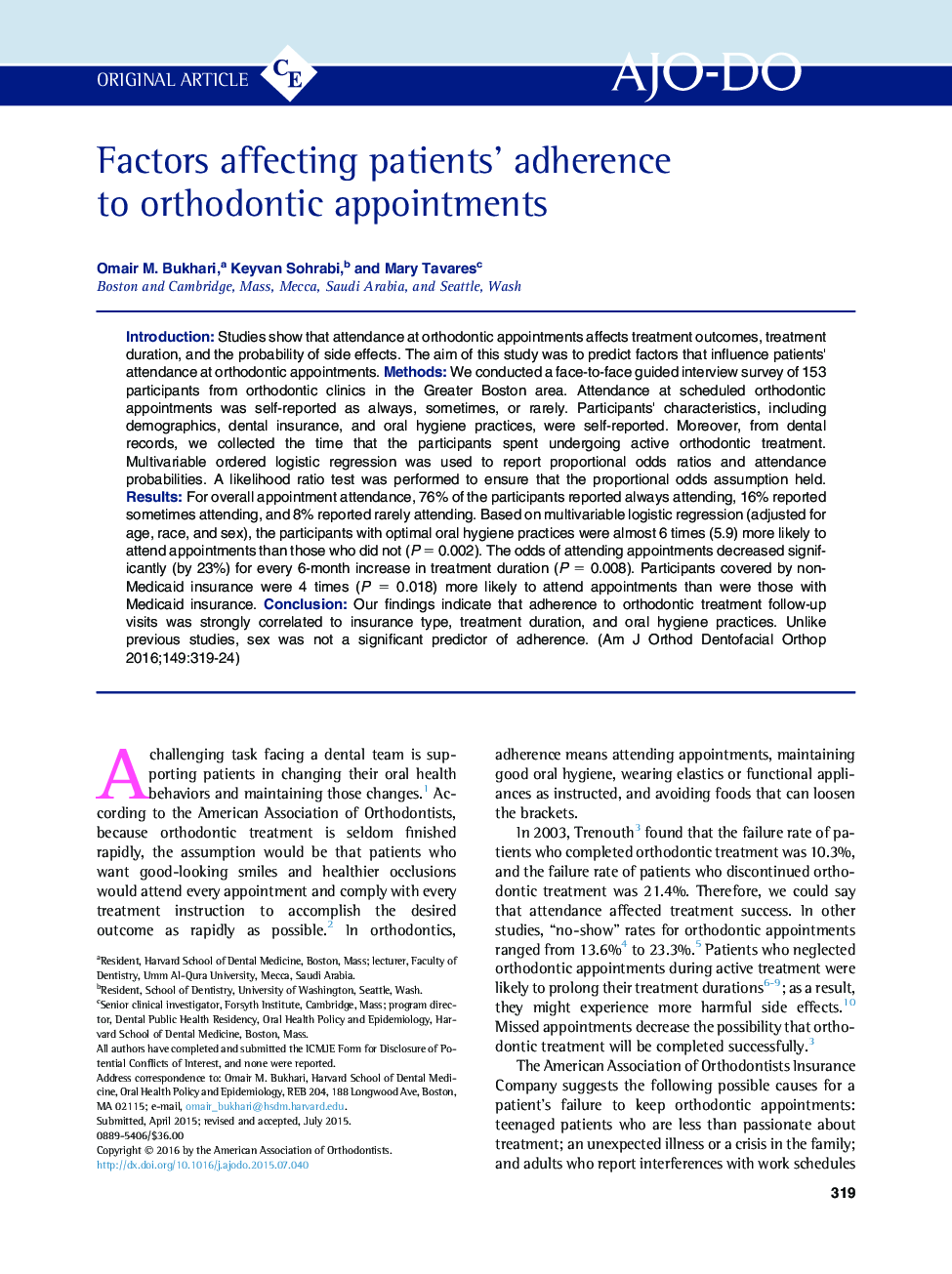| Article ID | Journal | Published Year | Pages | File Type |
|---|---|---|---|---|
| 3115506 | American Journal of Orthodontics and Dentofacial Orthopedics | 2016 | 6 Pages |
•We surveyed patients in private practice clinics about their attendance.•Patients with optimal oral hygiene were more likely to attend appointments.•Medicaid-insured patients had higher “no-shows” than non-Medicaid patients.•Oral hygiene, insurance type, and estimated treatment duration are good predictors of attendance.
IntroductionStudies show that attendance at orthodontic appointments affects treatment outcomes, treatment duration, and the probability of side effects. The aim of this study was to predict factors that influence patients' attendance at orthodontic appointments.MethodsWe conducted a face-to-face guided interview survey of 153 participants from orthodontic clinics in the Greater Boston area. Attendance at scheduled orthodontic appointments was self-reported as always, sometimes, or rarely. Participants' characteristics, including demographics, dental insurance, and oral hygiene practices, were self-reported. Moreover, from dental records, we collected the time that the participants spent undergoing active orthodontic treatment. Multivariable ordered logistic regression was used to report proportional odds ratios and attendance probabilities. A likelihood ratio test was performed to ensure that the proportional odds assumption held.ResultsFor overall appointment attendance, 76% of the participants reported always attending, 16% reported sometimes attending, and 8% reported rarely attending. Based on multivariable logistic regression (adjusted for age, race, and sex), the participants with optimal oral hygiene practices were almost 6 times (5.9) more likely to attend appointments than those who did not (P = 0.002). The odds of attending appointments decreased significantly (by 23%) for every 6-month increase in treatment duration (P = 0.008). Participants covered by non-Medicaid insurance were 4 times (P = 0.018) more likely to attend appointments than were those with Medicaid insurance.ConclusionOur findings indicate that adherence to orthodontic treatment follow-up visits was strongly correlated to insurance type, treatment duration, and oral hygiene practices. Unlike previous studies, sex was not a significant predictor of adherence.
